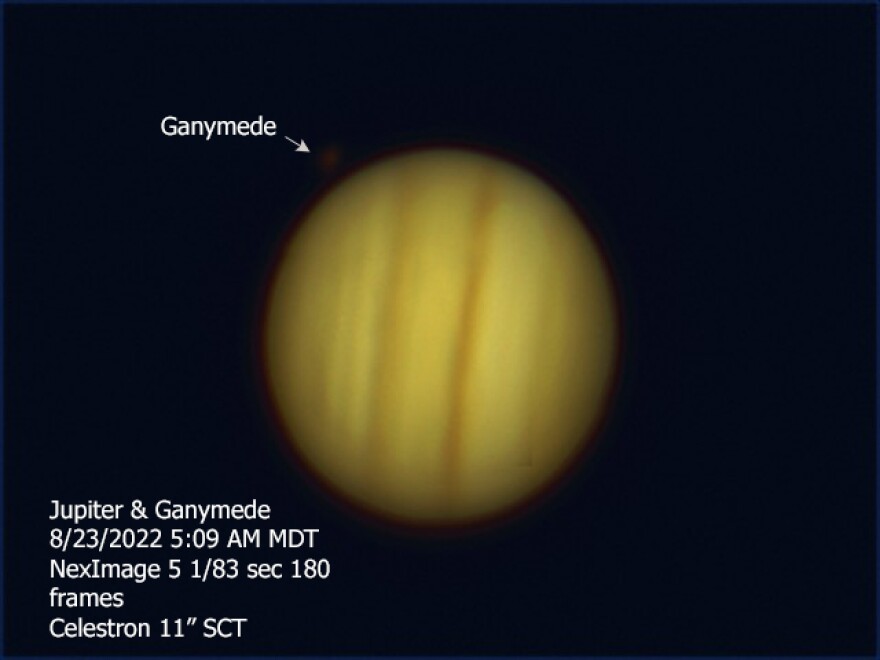About 9:30 PM MDT, Jupiter will be rising in the east. It is easy to locate, because it is the brightest object in the sky other than the Moon. Jupiter is very visible to the naked eye. With binoculars or a telescope, it presents a stunning view. It has bands that go across the planet and even a red spot can be seen occasionally. That bright red spot is a gaseous storm that has been raging for over 400 years.
Jupiter is so huge, that if you combine all the other planets in the Solar System together, it wouldn’t be as big as Jupiter. During September, Jupiter will reach opposition on the 26th. It will be closer to the Earth since 1963 and won’t be this close again until 2129.
In 1610, Galileo observed and documented that Jupiter had moons. This was a huge accomplishment. He was using a 1 ½” diameter telescope, that he had made. With that telescope he was able observe Jupiter and a small group of stars around it. Within a few days he realized that they were not stars, but moons orbiting around Jupiter. These four moons are known as the Galilean Moons. They are named Europa, Callisto, Io, and Ganymede.
It is believed that Jupiter has 79 moons. Only 53 have been named and the other 26 haven’t received official names yet. Of all these moons the four Galilean Moons are most interesting to scientists.
When we observe Jupiter and the Galilean Moons, they are usually in a line with each other. It looks like a small solar system of its own. The orbits are so well known that you can identify each of the four moons you observe, with the help of an app on your phone or an astronomical magazine. It is fun to impress your friends with your knowledge of the sky.



